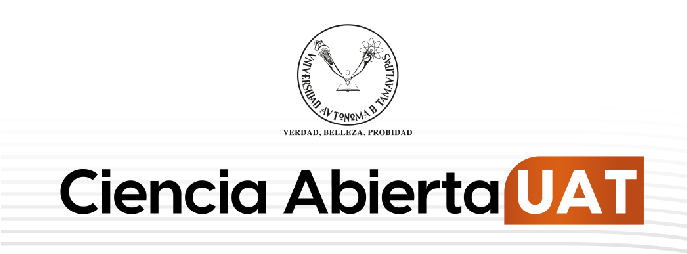Instructions for authors
TYPES OF CONTRIBUTIONS
Scientific Article
Structure the article in the following order: Main title, Abstract (maximum 1000 characters including spaces), Keywords, Abstract, Introduction, Materials and methods, Results, Discussion, Conclusions, Acknowledgements (optional) and References.
The maximum length of the manuscript submitted will be 25 pages, including Tables and Figures. The combined sum of Tables and Figures should be in accordance with what is required to complement your article. Please limit the number of references to a maximum of 40.
Review Article
Publication of this type of manuscript is subject to consideration by the Editor-in-Chief. The topics to be discussed will be those within the scope of the journal. The article should be structured in the following order: Main title, Abstract (maximum 1000 characters including spaces), Abstract, Keywords, Introduction, Development of the topic (with the necessary sections at the discretion of the author(s), Conclusion and References.
The maximum length of the manuscript submitted will be 30 pages, including Tables and Figures. The combined sum of Tables and Figures should not exceed four. The review should contain a minimum of 30 references.
Short Communications
This type of publication is suitable for recording the results of small complete investigations or giving details of new models or hypotheses, innovative methods or techniques. The short communication will have the same sections as the scientific article: Main title, Abstract (maximum 1000 characters including spaces), Abstract, Keywords, Introduction, Materials and methods, Results, Discussion, Conclusions, Acknowledgements (optional) and References.
The maximum length of the manuscript submitted will be 8 to 12 pages, including Tables and Figures. The combined sum of Tables and Figures should not exceed four. The number of references should be limited to a maximum of 20.
Clinical Case
This type of article offers scientific observations related to the care of a case, usually involving a rare, emerging, re-emerging or atypical nosological entity. This article should be composed of the following elements: Main title, Abstract (maximum 1000 characters including spaces), Keywords, Abstract, Keywords, Introduction,
Description of the clinical case (clinical history, laboratory confirmation, treatment, etc.), Discussion, Conclusions, Acknowledgements (optional) and References.
The maximum length of the submitted manuscript will be 10 pages, including Tables and Figures. The combined sum of Tables and Figures should not exceed five. The number of references should be limited to a maximum of 20.
GUIDELINES FOR MANUSCRIPT PREPARATION
General guidelines
Format and style
Type your work in Microsoft Word (OpenOffice or WordPerfect) in Times New Roman font, 12 point size, double spaced, with the text aligned to the left. Use letter-size pages with 2.5 cm margins on all four sides and numbered consecutively. Lines of text should be numbered throughout the manuscript starting on the title page. Tables and Figures should be at the end of the document.
The text should be written in the third person and in passive voice. The numbers from zero to nine mentioned in the text should be expressed with letters, except when they are accompanied by a unit of measurement or correspond to the number of a group or treatment of the experimental design. Use units and symbols of the International System of Units.
The manuscript of your contribution should not contain the names of the authors or their institutions, since this information will be included in another text file called “author's file”.
First and second order headings
First order headings will be used to identify the main sections of the paper (e.g., Introduction, Materials and methods, Results, Discussion), these should be left aligned, capitalized, bold and without a period. Continue with the text on the next line.
Second-order headings should be used if it is necessary to identify sections within each section. These headings should be aligned to the left, written in upper and lower case, bold and without a period. Continue with the text on the next line.
Sections of the manuscript
(Consider the following information according to the type of contribution of your work)
Title (main)
The main title should be with bold text. It is suggested that it should have a maximum of 140 characters, including spaces. If necessary, include the taxonomic level to facilitate the location of the organism(s) studied.
Abstract
The abstract, preferably, should be no longer than 1000 characters. The abstract should mention the objective of the work, relevant methodology, main result(s) and conclusion.
Keywords
It should include three to five keywords in alphabetical order. They should be written in lower case, except in cases where the use of capital letters is warranted.
Introduction
The introduction should be supported by a review of current scientific literature. In this section you can provide relevant background information on the topic of study, the approach of the topic addressed, the importance or justification of the study conducted. At the end of the introduction, the objective of the work should be mentioned.
Materials and Methods
The materials and methods section should provide sufficient information to allow the work to be repeated under similar conditions. It should describe the sampling or experimental design, study site (if relevant to the work), mention the way in which the study specimens were obtained (if applicable), frequency with which samples were obtained or variables were measured, duration of the study, describe the laboratory methods used and the sources from which they were obtained or modified, statistical methods used. In the case of the aforementioned equipment, the brand, model and origin (city and country) should be specified.
It should be indicated that the animal handling procedures were carried out in accordance with national and international ethical rules and regulations in force, implementing adequate measures to minimize pain and discomfort to the animals in the study. When animals owned by individuals or clients are used in clinical trials, the informed consent of the owner should be obtained and explicitly stated in the manuscript.
Results
The results should be organized concisely, supported by tables and/or figures. The description of the results should highlight the relevant findings of the study.
Discussion
This section should contain the interpretation of the results and the objective and unbiased comparison with similar studies, supported by relevant references.
Conclusions
Annotate briefly and concisely the contributions to the field of knowledge, supported by the results obtained.
References and citations in the text
References should be written in alphabetical and chronological order. All references should be cited in the text and all in-text citations should be included in the reference section. Citations and references should follow the APA (American Psychological Association) 7th edition style.
The use of the ampersand symbol “&” instead of “and” will be respected for both references and in-text citations, except in the case of narrative citations.
- Examples of the most common types of references in APA format:
Scientific article
Last name, A. A., & Last name, B. B. (year). Title of the article. Name of Journal, volume(number), #-#. https://doi.org/xxxx
Bowles, D. B., & Fry, D. R. (2009). Nasal cryptococcosis in two dogs in New Zealand. New Zealand Veterinary Journal, 57(1), 53-57. https://doi.org/10.1080/00480169.2009.36869.
Book
Surname, A. A., & Surname, B. B. (year). Book title (2nd ed.). Publisher. DOI or URL
McVey, D. S., Kennedy, M., Chengappa, M. M., & Wilkes, R. (2022). Veterinary microbiology (4th ed.). John Wiley & Sons.
Book chapter
Surname, A. A., & Surname, B. B. (year). Chapter title. In A. A. Editor & B. B. Editor (Eds.), Title of book (2nd ed., pp. #-#). Publisher. DOI or URL
McEwen, S. A., & Collignon, P. J. (2018). Antimicrobial resistance: a one health perspective. In S. Schwarz, L. M. Cavaco & J. Shen (Eds.), Antimicrobial resistance in bacteria from livestock and companion animals (1st ed., pp. 521-547). American Society for Microbiology. https://doi.org/10.1128/9781555819804.ch25
Tables
Tables must show indispensable information for the exposition and understanding of the results or of another section that requires it. They are resources that, in cells or other spaces arranged in columns and rows, integrate data of interest for the article.
Tables should be numbered using Arabic numerals and a title describing their contents should be placed after the number. The number and title should be placed at the top of the Table (e.g., “Table 1. Table title or description.”). They should be referred to by citing them within the text, e.g., “as shown in Table 1...”; “the results obtained (Table 2)”.
Tables should be included as text, not as an image. Attributes and data should be centered within each column.
Tables should be placed at the end of the manuscript, after the References section.
Figures
Figures are considered to be graphs, illustrations, photographs, diagrams and maps.
Figures will be numbered using Arabic numerals and the description of their contents will be placed after the number. The number and legend of the description will be placed at the bottom of the Figure (e.g., “Figure 1. Title or description of the Figure”). Figures should be cited in the text, e.g., “as shown in Figure 1...”; “the results obtained (Figure 2)”.
Figures should be placed at the end of the manuscript, after the References section and after the Tables, if the manuscript also includes them.
Our journal allows the publication of errata to correct minor errors detected in already published articles that do not invalidate their results or conclusions. Retraction of articles in cases where substantial errors, plagiarism, or fabrication of data are identified, or any other circumstance that seriously compromises the validity and reliability of the work.







